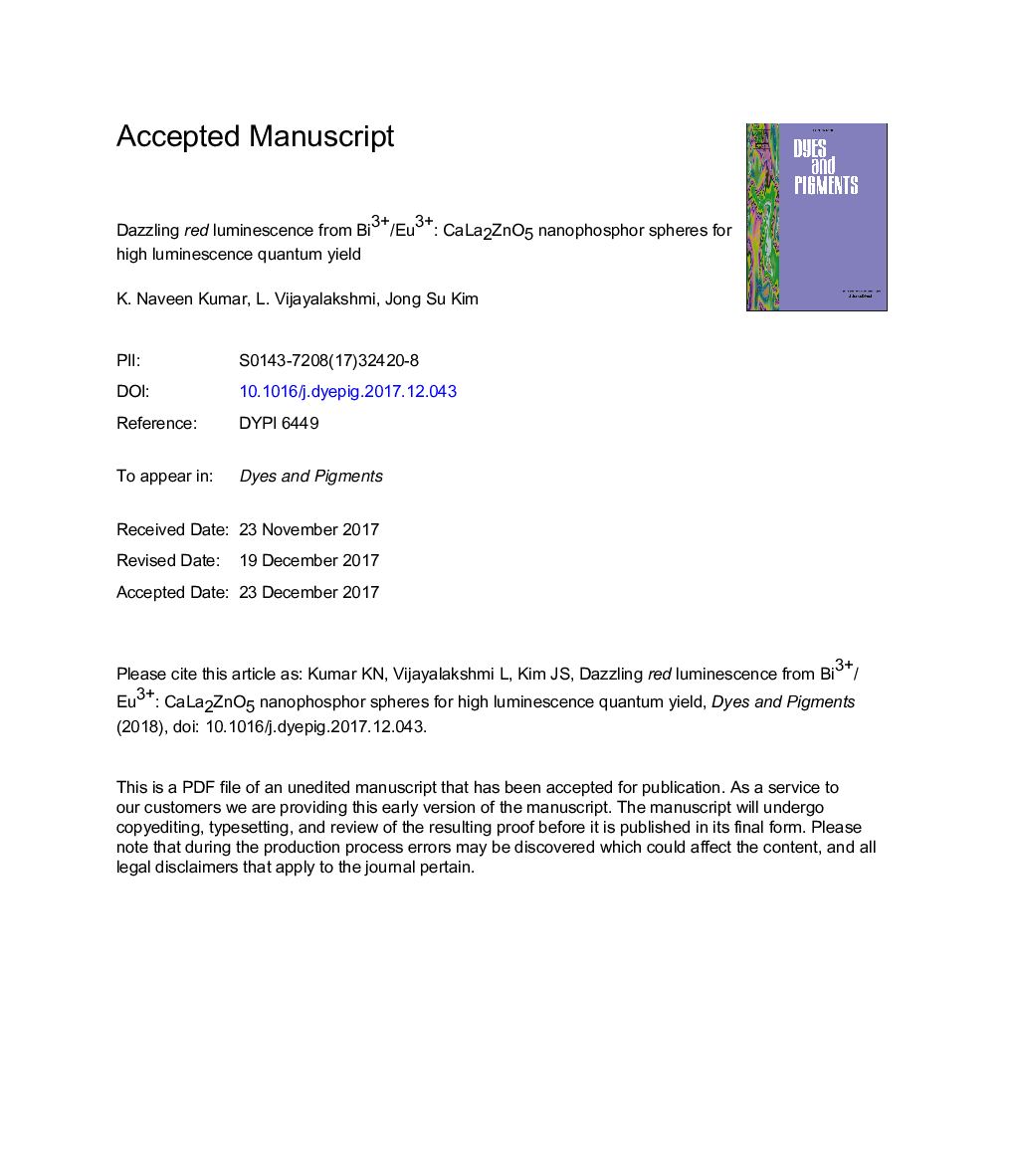| Article ID | Journal | Published Year | Pages | File Type |
|---|---|---|---|---|
| 6599224 | Dyes and Pigments | 2018 | 37 Pages |
Abstract
We have successfully synthesized co-doped Bi3+/Eu3+: CLZO nanophosphor spheres by citrate sol-gel method. Tetragonal structure has been confirmed from the XRD analysis. Morphological studies were carried out from FE-SEM analysis for the optimized sample. EDAX and XPS measurements were employed to confirm the presence of elements and their ionic states. The homogeneous shape, size and crystalline planes of the phosphor crystalline nanosphere have been clearly demonstrated by HR-TEM analysis. Photoluminescence (PL) spectral profiles reveal that the strong red emission has been noticed at 626â¯nm (5D0â7F2) from the Eu3+: CLZO phosphors under the visible excitation of 467â¯nm. The PL performance has been remarkably enhanced by increasing the Eu3+ ion concentration. By co-doping with Bi3+ ions to Eu3+: CLZO phosphors, the red emission pertaining to Eu3+ was appreciably enhanced through energy transfer from Bi3+ to Eu3+ ions. The energy transfer mechanism from Bi3+ to Eu3+ ions has been demonstrated by partial energy level scheme diagram. Commission International de I'Echairage (CIE) 1931 chromaticity coordinates (x-y) calculated for singly Eu3+(12â¯mol %): CLZO and co-doped Eu3+(12 mol %)+Bi3+(1â¯mol %): CLZO nanophosphor spheres and they were found to be (0.6644, 0.3355) and (0.6688, 0.3311) respectively. The Correlated Color Temperature (CCT) value was evaluated as 3059â¯K for co-doped sample. Moreover, lifetime and quantum efficiency for Eu3+ emission were significantly enhanced upon co-doping with Bi3+ ions to the Eu3+ doped CLZO nanophosphor spheres. The energy transfer phenomenon from Bi3+ to Eu3+ ions was clearly elucidated by several fluorescence dynamics such as overlapped spectral studies, photoluminescence spectral features, CIE color coordinates and quantum efficiency. These dazzling red luminescent nanophosphor spheres material could be suggested as a promising candidate for solid state illumination and optical display devices.
Keywords
Related Topics
Physical Sciences and Engineering
Chemical Engineering
Chemical Engineering (General)
Authors
K. Naveen Kumar, L. Vijayalakshmi, Jong Su Kim,
